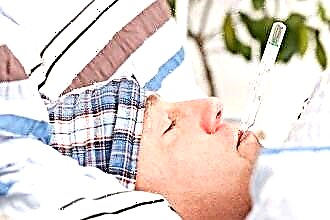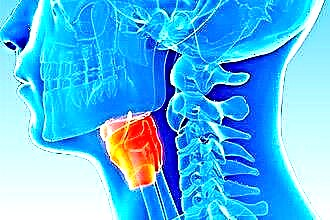 Which of them is really right? Any antibiotics of systemic or local action destroy only pathogenic bacteria, which include staphylococci, meningococci, Pfeiffer's bacillus, streptococci, etc.
Which of them is really right? Any antibiotics of systemic or local action destroy only pathogenic bacteria, which include staphylococci, meningococci, Pfeiffer's bacillus, streptococci, etc.
It follows from this that antimicrobial nasal drops only eliminate bacterial infection. In about 70% of cases, rhinitis is provoked by viruses, so it makes no sense to use antibacterial agents to treat it. From the article you will learn about when it is advisable to use antimicrobial drops and which ones are considered the most effective.
About drugs
Antibiotic drops from the common cold may contain semi-synthetic and synthetic components. They have a pronounced effect on the foci of bacterial inflammation, which are localized in the nasopharynx. Nasal preparations destroy bacteria, thereby eliminating swelling in the mucous membrane, inflammation and other manifestations of the disease - fever, profuse nasal discharge, nasal congestion, etc.
Irrational use of antibacterial drops can lead to the development of the activity of the mycotic (fungal) flora in the nasopharynx.
It should be understood that antimicrobial agents suppress the activity of not only "bad", but also "good" bacteria that inhabit the nasopharynx. If you use drugs thoughtlessly, this will lead to a violation of the microflora in the nasal cavity and, as a result, to a decrease in local immunity. Weakening of the immune defense is a catalyst for the reproduction of opportunistic fungi in the respiratory organs. Therefore, it is not recommended to abuse nasal medications and use them for prophylactic purposes.
Indications for use
In what cases can antibacterial nasal drops be instilled? Antimicrobial nasal agents are used only if a bacterial infection is localized in the nasal cavity. Most often, this is evidenced by the following manifestations:
- green or yellow nasal discharge;
- severe deterioration in general condition;
- muscle pain and weakness;
- swelling of the nasopharynx; persistent nasal congestion.
The use of antibacterial drops will be justified only if systemic antibiotics cannot be used for some reason. In pediatric practice, nasal preparations are used more often, since antimicrobial tablets and capsules create an excessive load on the child's body and often cause side reactions. Doctors prescribe antimicrobial drugs for the treatment of diseases such as:
- sinusitis;
- bacterial rhinitis;
- chronic nasopharyngitis;
- frontal;
- adenoiditis.
Antibacterial drops are drugs of etiotropic action that eliminate not the symptoms of the disease, but the cause of their occurrence, i.e. infection.
Combined drugs allow to stop several manifestations of bacterial or purulent inflammation at once. They may include not only antibiotics, but also vasoconstrictor, analgesic and antifungal components.
Name and description of drugs
Unlike systemic drugs, topical antibiotics quickly penetrate directly into the lesions. Using drops from the common cold with antibiotics, it is possible to prevent the penetration of bacteria into the paranasal sinuses, which leads to the development of sinusitis, frontal sinusitis, ethmoiditis, etc.
"Framinazin"
"Framinazin" is a local antibiotic from the aminoglycoside group, which damages the membranes of pathogenic microbes, which leads to their death. It is used to treat infectious and allergic inflammations in the upper respiratory tract:
- bacterial rhinitis;
- nasopharyngitis;
- sinusitis;
- adenoiditis.
The drug is produced in the form of a spray, therefore it is recommended to use it for the treatment of patients over one and a half years.
The antibiotic is active against very many pathogenic bacteria, therefore it is often prescribed to treat purulent inflammation even before the results of microbiological analysis are obtained. "Framinazin" can be used for rhinitis in pregnant women in the 2nd trimester of pregnancy. However, an overdose of medication can affect the development of the fetus, so it is advisable to consult a doctor before using it.
"Isofra"
The second name of this drug, which is produced in the form of a nasal spray, is Rinil. It is possible to eliminate bacterial inflammation in the nasal cavity and paranasal sinuses with the help of Isofra. This drug contains framycetin, which has a pronounced bactericidal effect. The systematic use of drops contributes to the destruction of the cell walls of microbes, which leads to their death and, accordingly, recovery.
In pediatric practice, the drug is prescribed for children over 1 year old, suffering from sinusitis and rhinopharyngitis of bacterial origin. Even premature abandonment of antimicrobial therapy rarely leads to the development of resistance to drops in bacteria.
"Albucid"
On the recommendation of a doctor, eye drops may be prescribed for the treatment of purulent inflammation in the nasopharynx. "Albucid" is an effective antimicrobial and anti-inflammatory drug, which is often used to treat ENT spectrum pathologies in young children.  The drops contain substances that are active against gonococci, pneumococci and streptococci.
The drops contain substances that are active against gonococci, pneumococci and streptococci.
The drug acts locally, therefore, a small amount of active substances penetrates into the systemic circulation. In this regard, "Albucid" is used to treat not only the smallest patients, but also expectant mothers. If antibiotics are dripped into the nose in time, this will prevent intoxication (poisoning) of the body by the products of the vital activity of bacteria. In other words, the timely use of drops prevents the onset of symptoms of intoxication - drowsiness, lethargy, fever, body aches, etc.
Combined drugs
Combined drugs are drugs that contain not one, but several active ingredients. Pharmaceuticals offers a variety of patented, off-the-shelf combination drugs to choose from. For the treatment of purulent inflammation in the nasal cavity, antimicrobial drops are used, which may additionally have the following properties:
- anti-inflammatory;
- disinfecting;
- fungicidal;
- pain relievers;
- decongestants.
In addition, the manufacture of combined (complex) drops can be ordered at the pharmacy. If necessary, such drugs can be prepared independently, using a ready-made prescription from a doctor or pharmacist.
"Sofradex"
Chronic sinusitis, rhinopharyngitis and bacterial inflammation of the adenoids can be cured with the help of Sofradex. Combined action drops contain three active ingredients:
- dexamethasone is a glucocorticosteroid that has a pronounced antipruritic and anti-inflammatory effect;
- neomycin - antimicrobial bactericidal agent that destroys all known types of pathogenic bacteria;
- gramicidin is a bacteriostatic antibiotic that prevents the growth of microbes.
Long-term use of the drug can have a systemic effect on the body, therefore it is not recommended to use it for the treatment of infants and pregnant women.
"Bioparox"
 When instilling nasal drops with antibiotics, it must be remembered that an overdose of drugs is fraught with the development of side reactions - dehydration of the nasal mucosa, nosebleeds, decreased sense of smell, etc. "Bioparox" is one of the drugs that have not only antibacterial, but also fungicidal action. In other words, they can treat not only microbial, but also fungal infections in the nasopharynx.
When instilling nasal drops with antibiotics, it must be remembered that an overdose of drugs is fraught with the development of side reactions - dehydration of the nasal mucosa, nosebleeds, decreased sense of smell, etc. "Bioparox" is one of the drugs that have not only antibacterial, but also fungicidal action. In other words, they can treat not only microbial, but also fungal infections in the nasopharynx.
Unlike many other antibiotics, Bioparox inhibits the synthesis of pro-inflammatory substances called cytokines.
The systematic use of the drug helps to reduce swelling in the nasopharynx and regression of inflammation. The combination spray is widely used to treat the following diseases:
- chronic rhinitis;
- bacterial rhinitis;
- sinusitis;
- fungal sinusitis;
- rhinopharyngitis.
An overdose of an antimicrobial drug is fraught with the development of allergic reactions - hives, skin rashes, etc.
"Garazon"
"Garazon" - drops of local action with antimicrobial, anti-inflammatory and antihistamine properties. The preparation contains two active substances at once:
- betamentazone is a synthetic corticosteroid hormone that has an anti-inflammatory effect on mucous membranes;
- gentamicin is an antibiotic that is active against most known strains of pathogenic bacteria.
Important! It is strongly discouraged to use the medicine for the treatment of patients suffering from fungal diseases.
To a greater extent, "Gazazon" is used in ophthalmic practice for the treatment of bacterial conjunctivitis, blepharitis, etc. But due to its high efficiency and the practical absence of side effects, it began to be used to treat diseases of the ENT spectrum.
Complex drop recipes
Compound drops are considered universal remedies that can eliminate most local manifestations of bacterial infection. However, the recipe for their preparation must be approved by a doctor. When drawing up a treatment regimen, he takes into account the peculiarities of the course of the ENT disease, after which he selects the appropriate components for the preparation of the medicine.
 Using a ready-made recipe for a combination product, you can mix the necessary ingredients yourself. Some of the most effective antibacterial compound drops include:
Using a ready-made recipe for a combination product, you can mix the necessary ingredients yourself. Some of the most effective antibacterial compound drops include:
- "Dioxidin" + "Naphthyzin" in a ratio of 1: 1 - has antimicrobial and vasoconstrictor effect;
- ½ bottle of "Naphtizin" + 1 ampoule of "Diphenhydramine" + 1 ampoule of "Dexamethasone" + ½ ampoule of "Dioxidine" - kills bacteria and fungi, relieves swelling and inflammation;
- 5 ml of "Dioxidin" + 1 ml of "Metazone" + 2 ml of "Hydrocortisone solution" + 2 ml of "Lincomycin" - has an antitoxic, antihistamine, anti-inflammatory and antibacterial effect;
- 2 ml "Tavegil" + 10 ml "Dexamethasone" + 10 ml 10 ml "Ophthalimide" + 1 ml "Adrenaline" - narrows the vessels in the nasopharynx, relieves inflammation, destroys bacterial infection and relieves allergic manifestations.
Complex nose drops can only be instilled in dosages recommended by a specialist. Combined funds are used when there is a high likelihood of developing complications such as otitis media, eustachitis, meningitis, etc.
Conclusion
Treatment of respiratory diseases with antibiotics is justified only if there are bacterial foci of inflammation in the respiratory tract.
Antimicrobial nasal drops target the infection directly in the nasal cavity. This allows you to quickly eliminate inflammation in the respiratory organs and prevent the further development of microbial flora.
Infectious and inflammatory processes of bacterial origin can be stopped with the help of Isofra, Rinil, Albucid, Tsipromed, etc. Sometimes pathogens cause severe inflammation and allergic reactions in soft tissues. In this case, the manifestations of the disease can be eliminated with complex (combined) medicines, which include Garazon, Bioparox, Sofradex, etc. If necessary, the doctor can independently draw up a prescription for drops that will stop all unwanted processes in the nasopharynx.



